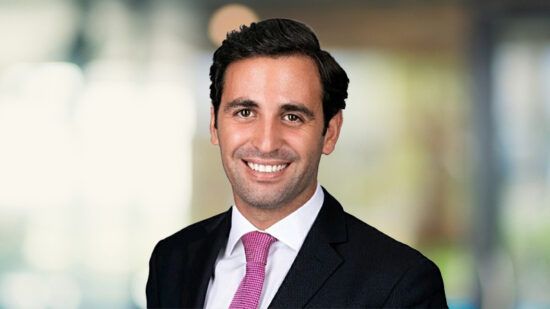As the US presidential election campaign begins to heat up, healthcare is once again a touchstone issue. In April, Democratic candidate Bernie Sanders reintroduced the ‘Medicare for All’ bill in a bid to establish a universal single-payer healthcare system.
It has been a bumpy ride for healthcare funds in recent years. They performed poorly amid weak returns between 2015 and mid-2017, and took a hammering during last year’s autumn sell-off. The resurrection of the ‘Medicare for All’ debate this year has fuelled further volatility.
According to FE Analytics, over the three years to 30 April 2019, the pharma, health and biotech sector within the FCA recognised universe returned 24%, and 21% within the Offshore Mutual market.
Sergi Biosca, a CFA at Spain’s Caja de Ingenieros, says the healthcare sector’s poor performance has been partly caused by rotation as investors have moved out of defensive stocks into more cyclical sectors.
However, he notes it was the top-weighted sector at the end of 2018 for investment funds and hedge funds.
According to Biosca, the ‘Medicare for All’ bill is unlikely to pass though the US Senate, given the Republican majority.
“[The bill is unlikely to pass] because of the associated costs, which represent an increase in federal government spending of about $30trn (€26.7trn) over the next decade, which would have to be financed by tax rises,” he says.
“On the negative side, healthcare stocks often reflect political risk before US elections. The sector has the worst relative performance against the S&P 500 in the year prior to previous elections.”
However, Biosca adds that recent underperformance has “already equalled the magnitude of those past corrections”.
Age old issue
Polar Capital fund manager Dan Mahony says the global healthcare sector is undergoing a period of significant structural change, which began about five years ago.
“Ageing populations around the world increasingly require better healthcare provisions but governments globally are struggling to pay,” he says.
Private sector solutions to this shortfall are becoming a large part of GDP everywhere amid rampant technological advances.
Affinity director of investments Russell Waite shares the view that the global healthcare sector is set to boom as people live longer and use more medical equipment. The biotech segment, in particular, is facing exponential growth, he says.
The top-performing fund over three years to 30 April 2019 was a biotech fund – Oppenheim PCP OP Medical Biohealth Trends – which returned 63.3%, according to FE Analytics. According to the fund’s factsheet, it invests 70.2% into biotech stocks and 14.1% into pharmaceuticals.
In terms of geography, the fund invests 66% into the US, followed by 7.1% in Denmark, 2.9% in The Netherlands, 2.6% France and 2.5% UK. Performance wise, it was followed by BB Adamant Medtech and Services B at 60.9%, Polar Capital Biotechnology I at 59.6%, Variopartner MIV Global Medtech N3 at 58.1% and CSIF 2 Global Digital Health Equity UB at 57%.
Top performing healthcare funds v sectors over three years to 30 April 2019

Source: FE Analytics
Mahony says over the past decade, many large pharmaceutical groups have downsized their research departments, creating an opening for biotech start-ups.
“Venture capital investment is pouring into biotech and there’s a lot of innovation. Thirty years ago, investment went from academia into sleepy pharma. Now it goes from academia to fast-moving biotech,” he says.
“Biotech firms can develop ideas quickly and generate clinical data and then sell it or licence it to ‘big pharma’, which has the resources to conduct the long, expensive trials required by the regulator. It’s the reason biotech has boomed in the past five years.”
Big pharma
Pictet senior investment manager Moritz Dullinger remains cautious about the prospects of large-cap pharmaceuticals because regulatory headwinds could put a squeeze on share valuations.
“To some extent,pharmaceutical companies have been priced into stock prices but the populist nature of politics makes it difficult to forecast,” says Dullinger.
Anu Narula, head of global equities at Mirabaud Asset Management, says it is important to look at a healthcare fund’s exposure to pharmaceuticals compared with other sectors, such as medical devices. “I’d be very scared of funds that have a huge pharma exposure because there is a clear trend towards reduced pricing,” he says.
Waite shares the view that fund selectors should probe any fund manager holding a lot of pharma stocks to understand the risk/reward dynamic.
The Trump administration has also taken a tough stance towards pharmaceutical companies in a bid to force them to lower prescription drug prices. A recent policy proposal seeks to force pharma companies to disclose the list of their prescription medicines advertised on TV, for example.
To offset pricing pressure, Dullinger advises investment in “healthcare companies with differentiated products as well as best-in-class medical tech companies”. Look for products that offer positive solutions that could reduce overall costs in the system, he urges.
“For example, if you’re treating a patient with an expensive product in the emergency room but it saves the patient from a stay in the hospital this would offset the higher cost of the product.
“These kinds of companies are the best for this kind of environment,” he says.
Innovation matters
In terms of technology, Mahony is looking at “concepts of transformation from companies that are improving efficiency and bringing solutions to the sector”.
As the healthcare industry adopts electronic methods of medical record keeping, firms that can help hospitals and clinics find out the standard of care and associated outcomes will be able to change reimbursement systems, he says. “The big change during the past five years is that we’re moving away from reimbursement systems measured essentially on a fee-for-service basis.
“We’d be moving away from, for example, heart surgeons getting the same amount of money for performing an operation irrespective of how good the quality is towards one that’s based on value, where payments are associated with improved outcomes.”
Tech companies that are expanding their value chain are also on Mahony’s radar.
Medical device company Medtronic, for example, makes surgery consumables such as rods, screws and metals that historically have been sold to surgeons.
However, the Dublin-headquartered group has acquired a robotics firm to improve surgery efficiency and quality. The move has allowed hospitals to treat more patients, reduce waiting lists and prevent adverse outcomes, says Mahony.
“Medtronic is facilitating the placement of subsidised capital equipment in operating rooms and then selling consumables to the hospitals, which is where they get their annuity stream back,” he says.
“It means the hospital gets locked into the system and the company is able to expand the value chain by aligning their own products with the needs of the surgeon and hospital.
“It’s is all driven by tech and people looking for value and efficiency improvements.”
Avoiding headwinds
Dullinger favours healthcare companies that are focused on prevention because, in the long-run, they will also save money. He cites Italian diagnostics group Diasorin as an example.
“We’re heavily increasing exposure to [prevention-focused companies], which sometimes trade at very attractive prices and inherently avoid too much political pressure,” he says.
When selecting healthcare funds, Biosca avoids strategies that invest in small, single-product companies and speculative companies that depend on US Food and Drug Administration decisions.
“We focus on funds that invest most of their portfolio in medium and large capitalisation companies with an experienced manager and a proven track record of generating high risk-adjusted and uncorrelated returns,” says Biosca.
Narula says anyone looking to invest in the wider global healthcare industry should not pass over healthcare-related opportunities in non-healthcare and consumer stocks.
“We want companies that are able to make cash and grow their cash pile in the space. Therefore, not all of the companies we own in healthcare are healthcare stocks per se. A lot of them are consumer stocks,” Narula says.
Narula cites solution providers such as sportswear companies Nike and Adidas, as well as French food group Danone, which manufactures probiotics, and US household group Church & Dwight, producer of vitamins, as examples.







